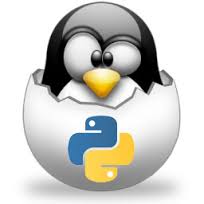|
CS 3721 Programming Languages Spring 2014 | |
Recitation 4.
Recursive Descent Parsers | ||
Week 4: Feb 4 - 6
| ||
Submit following directions at:
submissions
and rules at:
rules.
Deadlines are:
|
Recursive Descent Parsing: Study the pages:
- Recursive Descent Parsers
- Parser: "Bare"
- Parser: Debug
- Translate to RPN:
Consider the "Bare" Parser
given as part of the Recursive Descent Parser page.
Add extra code to this parser so that it translates an ordinary
arithmetic expression into RPN form.
Thus a+b*c$ should be translated to
abc*+$ and a*b+c$ to ab*c+$.
Test this translator with the inputs:
Test Data.
[This should be very easy. Your submission must carefully show the changes
you made to the parser, although you don't have to show the whole
program. You must also run the 8 test cases, showing the source
data and output data for each case. There are no errors in this
input data. And, hey, now you have a translator from arithmetic
expressions to RPN.]
Notes: Problems 2 and 3 below have nothing to do with shift-reduce parsing. The code should be fairly short and simple, but it may be conceptually difficult for some students. One common problem has to do with the use of scan(), too many, too few, in the wrong place. Thus the scanning can produce annoying and tricky bugs. Remember: the simplest scanning strategy (while not the best) is to scan for the next token immediately after making a decision based on the current token. To help with debugging, you should have more output than just "accept" or "reject". Often you don't have to do error-checking in this course, but in this case your program should detect all possible errors, and handle the error, perhaps as in the examples above. Some additional output would help, but the output of the "debug" parser above is probably excessive, and may create more problems that solving them. In each problem, about half the data inputs were erroneous. As always, you must include the parser code, along with output of runs with each of the given inputs. - Parser for Python Dictionaries:
Here we want to recognize a simplified (almost trivial) class of Python
Dictionary types. For us here, a dictionary
is has the following intuitive syntax:
"it consists of a sequence of one or more items, each separated from the next
by a comma, enclosed in curly brackets. Each item is a digit
followed by a colon followed by a letter." All whitespace is ignored.
Examples are { 3:a } and { 2:b , 4:d , 3:e }. To get
a precise definition of the syntax, use the following grammar:
Grammar: Simplified Dictionary D --> '{' L '}' L --> I { ',' I } I --> digit ':' letter - Parser for the "Odd" Language:
Consider the grammar that you saw in
Recitation 2:
Grammar: Odd language P −−> S $ (P = start) S −−> b M b M −−> ( L | a L −−> M a )
Revision date: 2014-01-28. (Please use ISO 8601, the International Standard.)
